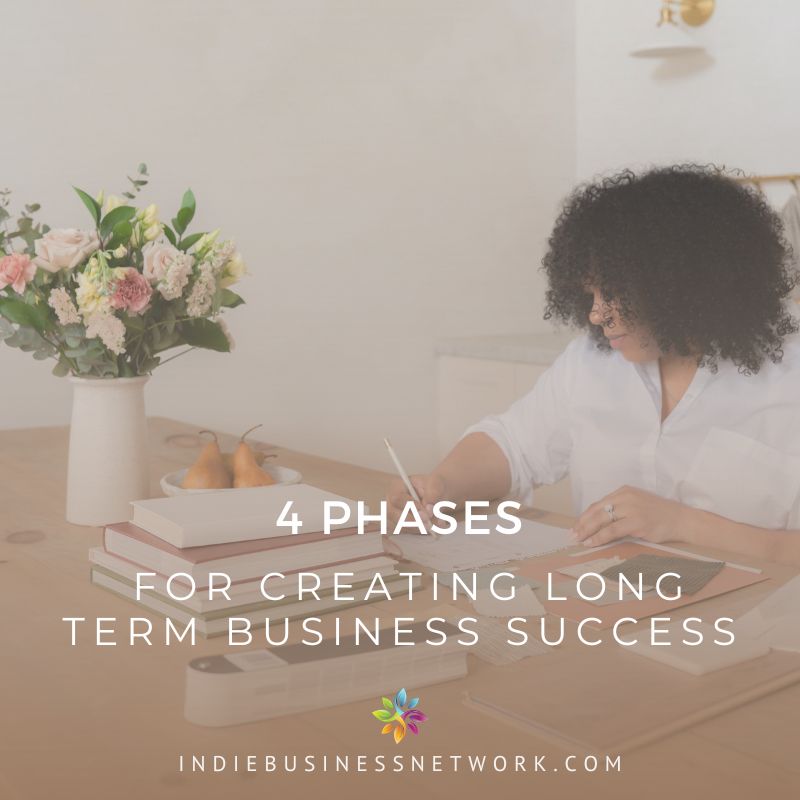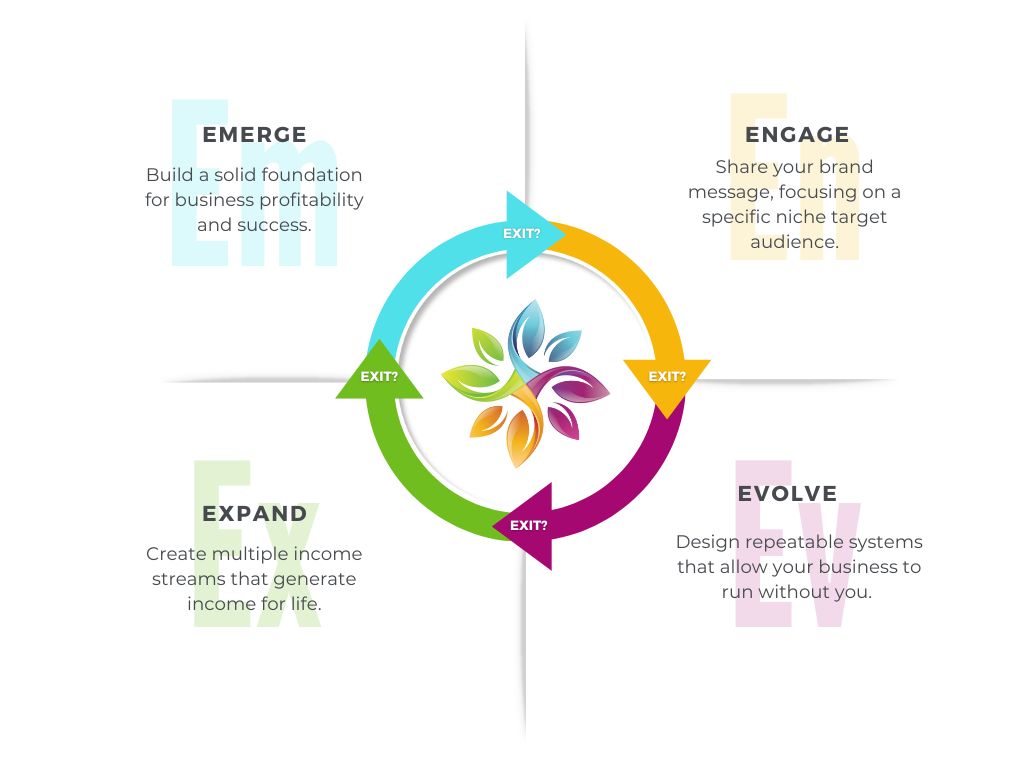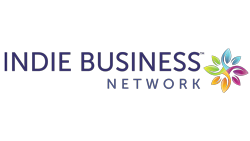The Indie Business Network has thrived for nearly a quarter of a century, and a lot of people ask me how that happened. The question is articulated in different ways, but here is how one person put it recently on social media: “You have been so consistent with IBN, and I don't see that very often over such a long period of time,” she said. “How have you done that?”
Well, I'll tell you.

How the Indie Business Network Has Grown
As IBN has grown over the years, we have encountered multiple unforeseen external pressures, including market downturns, recessions (another one seems to be looming!), a global pandemic, domestic unrest, and world wars. We have also encountered internal pressures — the types of things that are a part of everyone's life, like — personal health and relationship challenges and losses.
While those forces have come and gone, one thing that has never changed is IBN's relentless focus on offering simple solutions to the specific problems of specific types of people. Generally speaking, that includes these four categories:
- General and product liability insurance
- Entrepreneurial training and support, particularly in the areas of strategic business planning, influence, sales, and marketing
- Mentoring in areas of leadership and personal development
- Support and community building
Our relentless focus has served IBN and its members well. But it's not just that focus that explains IBN's longevity. It can also be explained by the fact that, from the very beginning, I personally viewed IBN through a very long lens.
IBN is not and has never been a “make money fast” kind of endeavor. Instead, it's about offering sustained value over time. It's about taking baby steps every day to build a living, breathing entity that would serve and empower small business owners across multiple disciplines for decades.
In order to achieve that goal, I personally followed a particular roadmap. I didn't really know I was doing it at the time, but with the benefit of hindsight, it's clear to me that we have walked a sequential path to sustained entrepreneurial success that has minimized overwhelm and helped us remain focused on what matters most in the business at any given time and in any given phase.
From this experience, I developed and honed a unique and proprietary entrepreneurial success path with four distinct phases. I, call it The Maker Method. This diagram illustrates the four phases of the path: Emerge > Engage > Evolve > Expand.

The 4 Phases of Sustained Entrepreneurial Success
PHASE ONE: EMERGE
As they say, when you fail to plan, you plan to fail, so the Engage Phase is about planning and preparation. In this phase, you lay a solid foundation upon which you build a lasting and profitable business that not only serves your customers and clients, but also serves you.
Among other things, the Engage Phase is the starting point for creating a business model that works for your life. This way, you integrate your business into your life instead of the other way around. There's a big difference.
The Emerge Phase is also where you take the time to clearly articulate your target audience and the value you deliver to them.
If you want to position yourself for long-term success, don't try to build a strong business on a weak foundation. It may work for a few months, but it will be a disaster in the long run. The steps in the Emerge Phase help you avoid that.
PHASE TWO: ENGAGE
During the Engage Phase, you do any and everything possible to get the attention of your target audience and influence them to buy your products — not just once, but repeatedly. You build out your social media presence, establish and grow email and text marketing campaigns, begin to develop meaningful collaborative relationships, and create an ecosystem in which you and your business can thrive and grow.
You begin to build trust during this phase. You engage with your target audience where they are, and you develop lasting relationships with them. You may use social media, email marketing, text marketing, a private Facebook group, live events, and virtual meetings.
Your main job during the the Engage Phase is to build trust and rapport, which leads to sales opportunities.
PHASE THREE: EVOLVE
I often call the Evolve Phase the “exfoliation” phase. During it, you shed dead skin in your business and evolve it from a from a simple to a more complex form. The process of sloughing off old systems and strategies is a never-ending one, and it starts in this phase. Basic systems are in place that allow you to lower your costs. This creates more efficiencies, which lead to greater profit margins.
You'll also begin to hire and delegate so you can focus largely on the tasks that only you can perform.
By the time you have moved to the end of the Evolve Phase, your business is established with consistent profits.
You now have the option to maintain what you have created, or you can move to the Expand Phase — or you may choose a middle ground. By the time you are through the Evolve Phase, you have options.
PHASE FOUR: EXPAND
The Expand Phase presents opportunities to increase your income based on the strength of the platform you have created. Because of the team and systems you have in place, the business needs less direct hands-on attention from you personally.
You can diversify your product offerings. You can also offer existing products to new target audiences. Collaborations, memberships, subscriptions, branded merchandise, and expansions into new audiences are among the options at your disposal in the Expand Phase. You may consider more sophisticated purchases, including real estate and larger manufacturing equipment.
Due to your solid foundation and track record, when you get to the Expand Phase, you are equipped to pivot more effectively and efficiently in the face of any and all unexpected changes that are sure to come your way as you propel your business forward.
(THE SILENT) PHASE FIVE: EXIT
At some point, we will all exit the earth. We will exit our businesses at some point too. You can exit a business at any time for any number of reasons, but the best way to exit is on your terms. The Exit Phase is a silent phase within each of the other phases, and you can enter it at any time.
You can sell your business or give it away when you don't want to own it anymore.
Or you can simply shut it down, as my colleagues Christopher and Suzanne McMahon did. After over two decades in a successful natural aromatics supply business, they disabled their website, sold the last of their products to their email subscribers, the business disappeared — in their words — “like a Tibetan sand painting.”
Pause at least quarterly to tweak assess where you are in terms of your exit plan. This will give you the best chance of exiting your business on your terms.
SUMMARY
No matter how new or old your business is, you are in one of the four phases identified here. You can strengthen your position by pinpointing which phase you are in and what you should be focusing on while you are there.
REQUEST FREE MENTORING
BOOST YOUR ENTREPRENEURIAL SUCCESS QUOTIENT WITH A FREE ENTREPRENEURIAL MENTORING SESSION
A free, personalized coaching session will help you clarify your goals and brainstorm ways to build a business that makes you happy and successful and can generate income for life. Want that?
If so, get started NOW by sending a request through our contact page.
We look forward to hearing from you!
Which phase of entrepreneurship is your business in? Are you emerging? Expanding? Or somewhere in between? What do you think of this framework? How can you apply it to your business today?



